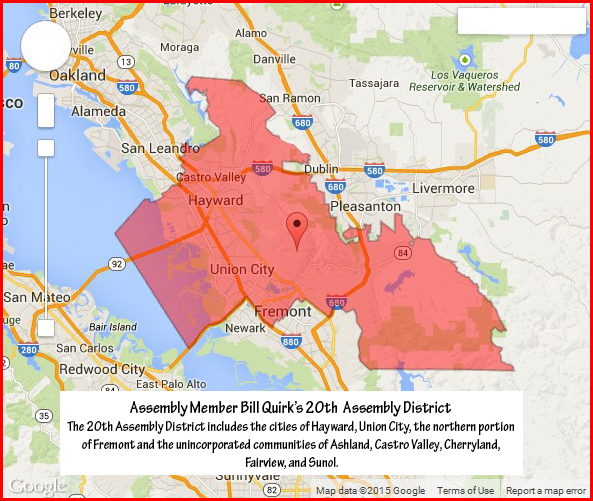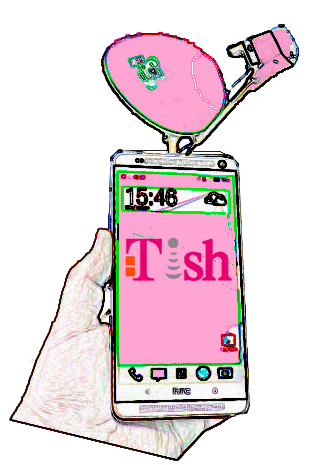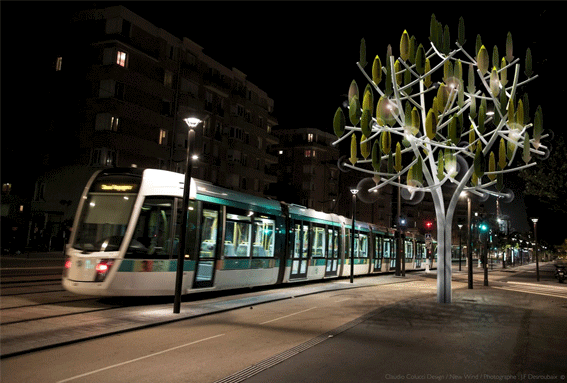How could I not have spotted the name before now!
Author: Dr. Jonathan L. Kramer
T-Dish? Mobile-D? Deep Dish Pizza?
Word on the street is that T-Mobile and Dish are talking merger. Dish has lots of bandwidth but in the wrong direction. T-Mobile has, well… it’s pink. And T-Mobile is likely to still have some of the Post-AT&T money. And it has some bandwidth. And it’s pink.
Actually might be a very interesting combination.
jlk
PS: I’ll work up a proposed logo real soon now. It will be pink.
(UPDATE: I have figured out what should be the official name of the joined lovebirds, and a proposed family crest. See this link)
AB57: End of Local Cell Site Zoning in California?
AB 57, no longer called the “Broadband Communications Infrastructure Act” has now morphed into the wireless industry’s dream: a deemed approved remedy for cell tower siting, and (vitally) a statewide policy shift that cell sites are NOT a municipal concern; rather they are matter best left for the state.
AB 57 has become an exercise in bait and switch: The pro-consumer first version of AB 57 (the bait) has morphed to be a huge gift to the wireless industry (the switch).
Here’s what the bill says now:
The people of the State of California do enact as follows:
Section 65964.1 is added to the Government Code to read:
(a) A colocation or siting application for a wireless telecommunications facility, as defined in Section 65850.6, shall be deemed approved if both of the following occur:
(1) The city or county fails to approve or disapprove the application within the time periods established by the Federal Communications Commission in In re Petition for Declaratory Ruling, 24 FCC Rcd. 13994 (2009).
(2) All public notices regarding the application have been provided consistent with the public notice requirements for the
application.(b) The Legislature finds and declares that a wireless telecommunications facility has a significant economic impact in California and is not a municipal affair as that term is used in Section 5 of Article XI of the California Constitution, but is a matter of statewide concern.
Assembly Member Bill Quirk, a Democrat from California’s 20th District, has created language that even the FCC was unwilling to do: AB 57 creates a ‘deemed approved’ remedy for shot clock issues related to new sites and collocations that are not covered by Section 6409(a).
Here’s the kicker: Assembly Member Bill Quirk’s legislation says that cell siting is NOT a local affair, but rather one of statewide interest. This would mark the start of state-wide preemption of cell tower siting if this legislation becomes law.
This is a massive gift bill to California’s wireless industry at the expense of Assembly Member Quirk’s constituents, and every resident in California.
Time to put the brakes on this ill-conceived legislation that has the wireless industry’s fingerprints all over it.
Why not call and ask Assembly Member Quirk why he’s favoring the wireless industry over his own constituents.
AB 57: Now the Cell Tower Siting Fangs Are Out
AB 57, which should be called the “Cell Site Gift Act of 2015” was amended yesterday in the Assembly to add real fangs intended to bite Californians in favor of the wireless industry.
The bill by Assembly Member Bill Quirk (D, 20th) now simply says the following:
(a) A colocation or siting application for a wireless
telecommunications facility, as defined in Section 65850.6, shall
be deemed approved if both of the following occur:(1) The city or county fails to approve or disapprove the
application within the time periods established by the Federal
Communications Commission in In re Petition for Declaratory
Ruling, 24 FCC Rcd. 13994 (2009).(2) All public notices regarding the application have been
provided consistent with the public notice requirements for the
application.(b) The Legislature finds and declares that a wireless
telecommunications facility has a significant economic impact in
California and is not a municipal affair as that term is used in
Section 5 of Article XI of the California Constitution, but is a
matter of statewide concern.
The Plain English translation of what Assembly Member Qurik now proposes on behalf of his wireless industry supporters is this:

‘Any wireless siting application of any kind, if not either approved or disapproved by a city or county after public notice in the time limits set by the FCC, shall be DEEMED APPROVED.’
Essentially, Assembly Member Quirk extends the deemed approved remedy greatly benefiting his wireless industry supporters to every kind of wireless project in California, which goes far beyond what the FCC has done.
The timing of this bill is very interesting. At the very moment that Assembly Member Quirk is trying to super-bootstrap a portion of the FCC rules to all wireless projects in California, those federal rules are under attack in a federal law suit filed in the 4th Circuit Court of Appeals.
Now is the time to start writing to your Assembly and Senate members to tell them that you don’t want the wireless industry to have super-rights not intended by either Congress or the FCC, and special state-level rights intended to make it almost impossible for the public to effectively argue against cell sites that detrimental to community aesthetics.
Attack of the Drones
It’s unusual for me to republish press releases, but this one caught my eye. -jlk
ATLANTA, March 30, 2015 /PRNewswire/ — Solusia Air, LLC, an affiliate of Solusia Services, LLC, today announced it has been awarded an exemption from the Federal Aviation Administration (FAA) to deploy unmanned aircraft systems (UAS) to perform asset audits and safety inspections for wireless and utility infrastructure firms. Solusia Air began the application process in 2014, working with JDA Aviation Technology Solutions.
The UAS included in the exemption is the Aibot X6 UAS by Leica Geosystems. The FAA approval agrees that the combination of the Aibotix X6 Aircraft and Solusia Air’s training and flight safety procedures constitute a minimal risk and are in the interest of the public good.
“The FAA exemption means wireless and utility companies now have a more efficient, safer method for performing audits and safety inspections of infrastructure assets,” said Chris Moccia, CEO, Solusia Air. “Leica is a proven global leader in optics, lasers, GIS software, modeling and 3D spatial solutions and we are thrilled to be partnered with them in this innovative endeavor.”
 Under the FAA’s current interim policy, UAS operators who adhere to certain parameters are permitted to fly UAS commercially under Section 333 of the FAA Modernization and Reform Act until such time as the FAA fully implements the UAS regulatory structure.
Under the FAA’s current interim policy, UAS operators who adhere to certain parameters are permitted to fly UAS commercially under Section 333 of the FAA Modernization and Reform Act until such time as the FAA fully implements the UAS regulatory structure.
“This is exciting news for Solusia Air and Leica Geosystems,” said Bryan Baker, North American UAS Sales Manager and pilot for Leica Geosystems Inc. “The FAA is under a lot of pressure to streamline the approval process and finalize the regulatory structure for unmanned aircraft systems. This is the first step to getting companies through the process faster so that they can take advantage of this revolutionary technology.”
Solusia Air UAS services for wireless carriers and tower operators include high-definition photo and video inspection, asset audits, RF microwave path validation, intermodulation/interference identification, wildlife species identification, and safety assessments.
Utility companies can benefit from UAS inspections by obtaining high-definition photo and video data for inspection of substation infrastructure, IR inspections, 3D imaging and point cloud/photogrammetry of utility towers and transmission lines, and wind turbine inspections.
“Wireless infrastructure is in a continuous, dynamic lifecycle,” continued Moccia. “As new technologies are deployed to keep up with the growing demand for mobile data and high-speed connections, towers need to be audited to document and verify existing configurations and equipment inventories. With UAS solutions, this auditing process can now include timely online retrieval of data and images that customers need to make strategic planning, construction and maintenance decisions.”
About Solusia Air
Solusia Air, LLC is a professional services firm that utilizes UAS technologies to provide asset audits and safety inspections for wireless carriers, tower owners and utilities. Our services help reduce costs and save lives by reducing and even eliminating physical climbs, delivering a much safer, data-rich alternative that accurately captures HD photographic and video data of equipment and infrastructure. Our UAS are powered by proprietary, engineered technologies and processes that give customers innovative insights, advanced views of assets, and engineered technical analysis never before delivered or measured. The company is FAA compliant, fully insured, and meets all legal requirements to conduct commercial operations using UAS in the United States. To learn more, visit www.solusiaair.com.
SOURCE Solusia Air, LLC
Rick Ellrod’s Good Idea
Rick Ellrod, the Director of the Communications Policy and Regulatory Division of the Department of Cbale and Consumer Affairs for Fairfax County, Virginia had a good idea regarding the electricity generating tree (read more HERE). Add some tiny illuminations to light of the tree at night.
Here’s my take on Rick’s idea:
A Power-Generating Faux Tree
For my friends in local government service, this should be on your radar. It’s on mine.
I find this design to be aesthetically compelling in an urban landscape.
For more see: www.newwind.fr (In French only, at least for now.)
AB57 Amended: First Baby Tooth Added
As I predicted in yesterday’s post, AB 57 was, in fact, amended to start adding teeth. The first tooth is a innocuous…adding a representative of the League of California Cities and a representative of the California State Association of Counties to the board of the California Broadband Council.
But in the best hide-the-ball tradition, the real bite of this legislation, yet to be added (but surely it will), is related to this intent:
Existing law declares the intent of the Legislature that, consistent with this authorization, municipalities have the right to exercise reasonable control as to the time, place, and manner in which roads, highways, and waterways are accessed, but that for the control to be reasonable it must, at a minimum, be applied to all entities in an equivalent manner.
The “all entities” language just above suggests that a tooth about to pop through the gums will be a legislative requirement that telegraph or telephone corporations be treated like all entities in the right-of-way, which would include gas, water, sewer and most importantly electric utilities. If this is the goal of AB57, yet to be disclosed in this legislation, then it does not well serve Assembly Member Quirk’s constituents or property owners in California. The various utilities each have unique technical requirements for installation, operations, and the like for their equipment. It is illogical to equate any of the utilities to any of the other in the right of way. Trying to do so would only encourage the installation of cell sites in residential areas without suitable aesthetic controls simply by saying that 100 years ago PG&E installed a pole, overhead lines and facilities in the area, 100 years later a wireless carrier should be able to do the same thing. There is a substantial difference between a 32,000 volt electrical circuit in the right-of-way and a cell site in the right-of-way. Hopefully this legislation, as it continues to be amended, will not try to make them the same.
So far, the first amendment to add a representative of the League of California Cities and a representative of the California State Association of Counties to the board of the California Broadband Council is innocuous, but more teeth and sharper teeth are sure to come…soon.
Here is the bill as it stands today, March 28, 2015:
BILL NUMBER: AB 57 AMENDED
BILL TEXT
AMENDED IN ASSEMBLY MARCH 26, 2015
INTRODUCED BY Assembly Member Quirk
DECEMBER 2, 2014
An act to amend Section 8886 of the Government Code,
relating to communications.
LEGISLATIVE COUNSEL’S DIGEST
AB 57, as amended, Quirk. Broadband communications infrastructure.
The existing federal Telecommunications Act of 1996 preempts any state or local statute or regulation that may prohibit or have the effect of prohibiting the ability of any entity to provide any interstate or intrastate telecommunications service, but service. However, this provision does not prohibit a state from imposing imposing, on a competitively neutral basis, requirements necessary to preserve and advance universal service, protect the public safety and welfare, ensure the continued quality of telecommunications services, and safeguard the rights of consumers. The prohibition also contains a “safe harbor” that does not affect the authority of consumers, nor does it prevent a state or local
government to manage from managing the public rights-of-way or to require requiring fair and reasonable compensation from telecommunications providers, on a competitively neutral and nondiscriminatory basis, for use of public rights-of-way on a nondiscriminatory basis.
Under existing law, telegraph or telephone corporations may construct lines of telegraph or telephone lines along and upon any public road or highway, along or across any of the waters or lands within the state, and may erect related poles, posts, piers, abutments, and other necessary fixtures of their lines, but may not incommode the public use of the road or highway or interrupt the navigation of the waters. Existing law declares the intent of the Legislature that that, consistent with this authorization, municipalities have the right to exercise reasonable control as to the time, place, and manner in which roads, highways, and waterways are accessed, but that for the control to be reasonable it must, at a minimum, be applied to all entities in an equivalent manner.
Existing law establishes the California Broadband Council in state government for the purpose of promoting broadband deployment in unserved and underserved areas of the state and broadband adoption throughout the state, imposes specified duties on the council relating to that purpose, and specifies the membership of the council.
This bill would state the intent of the Legislature to enact legislation to promote the deployment of communications infrastructure by removing barriers to investment. The bill would add the President of the Board of Directors of the League of California Cities and the President of the Executive Committee of the California State Association of Counties, or their respective designees, to the membership of the council.
Vote: majority. Appropriation: no. Fiscal committee: no
yes. State-mandated local program: no.
THE PEOPLE OF THE STATE OF CALIFORNIA DO ENACT AS FOLLOWS:
SECTION 1. The Legislature finds and declares all of the following:
(a) California consumers and businesses have adopted new, Internet-based technologies and mobile connections at an unprecedented rate. Internet-based products and devices, including smartphones and tablets, are providing consumers everywhere with new choices to connect, to communicate, and to access information and entertainment.
(b) The deployment of faster, more robust, and advanced wireless and wireline broadband infrastructure is essential to ensuring there is sufficient capacity and coverage to support the increasing reliance of California residents on broadband services.
(c) State and local review of broadband infrastructure deployment serves important interests, but at the same time, California must take steps to ensure that requirements do not hinder investment. State and local permitting processes should be designed to eliminate unnecessary barriers and spur deployment of infrastructure. This includes streamlining permitting requirements to reduce delay and cost, and the creation of uniform processes.
(d) New and upgraded infrastructure delivers a vast array of consumer and community benefits, including important improvements to public safety, education, and healthcare. The power of mobile communications is a critical tool for first responders in emergency situations. According to the Federal Communications Commission, nearly 70 percent of 911 calls are made from mobile telephones, and that percentage is growing.
(e) As we continue the transition to a knowledge-based, technology-driven economy, California must invest in students and provide them with the proper tools and technologies to bolster academic achievement, starting with expanding access to high-speed broadband Internet and next-generation Internet Protocol-based networks.
(f) Facilitating broadband deployment additionally plays a key role in advancing telemedicine and mobile health applications, which can help Californians remotely monitor their health while reducing medical costs.
(g) Wireless broadband is also key to economic development and a driver for new business and jobs. Businesses increasingly depend on strong wireless broadband service to carry their employees through the work day. An estimated 94 percent of small businesses surveyed use smartphones to conduct business and mobile technologies are saving the country’s small businesses more than sixty-five billion dollars ($65,000,000,000) a year.
(h) Broadband infrastructure deployment creates jobs. A 2013 study conducted by the research firm Information Age Economics projects that wireless infrastructure investment will generate as much as one trillion two-hundred billion dollars ($1,200,000,000,000) in economic growth while creating over 1.2 million new jobs, nationally, over the next five years.
(i) It is the intent of the Legislature to enact legislation to promote the deployment of communications infrastructure by removing barriers to investment. Removing investment barriers is critical to meeting the surging demand by California residents for advanced wireless and wireline broadband technologies and services, supporting and enhancing critical public safety needs, and bridging the digital divide by increasing access for more Californians to improved education, health care, and economic development opportunities.
SEC. 2. Section 8886 of the Government
Code is amended to read:
8886. (a) The membership of the California Broadband Council shall include all of the following:
(1) The Director of Technology, or his or her designee.
(2) The President of the Public Utilities Commission, or his or her designee.
(3) The Director of Emergency Services, or his or her designee.
(4) The Superintendent of Public Instruction, or his or her designee.
(5) The Director of General Services, or his or her designee.
(6) The Secretary of Transportation, or his or her designee.
(7) The President of the California Emerging Technology Fund, or his or her designee.
(8) A member of the Senate, appointed by the Senate Committee on Rules.
(9) A member of the Assembly, appointed by the Speaker of the Assembly.
(10) The President of the Board of Directors of the League of California Cities, or his or her designee.
(11) The President of the Executive Committee of the California State Association of Counties, or his or her designee.
(b) Members of the Legislature appointed to the council shall
participate in the activities of the council to the extent that their
participation is not incompatible with their positions as Members of
the Legislature.
If you’re wondering about Government Code Section 8886, here’s what it says as of today:
8886. (a) The membership of the California Broadband Council shall
include all of the following:
(1) The Director of Technology, or his or her designee.
(2) The President of the Public Utilities Commission, or his or
her designee.
(3) The Director of Emergency Services, or his or her designee.
(4) The Superintendent of Public Instruction, or his or her
designee.
(5) The Director of General Services, or his or her designee.
(6) The Secretary of Transportation, or his or her designee.
(7) The President of the California Emerging Technology Fund, or
his or her designee.
(8) A member of the Senate, appointed by the Senate Committee on
Rules.
(9) A member of the Assembly, appointed by the Speaker of the
Assembly.
(b) Members of the Legislature appointed to the council shall
participate in the activities of the council to the extent that their
participation is not incompatible with their positions as Members of
the Legislature.
AB57 Comes Alive – Local Wireless Siting Controls In California May be in Jeopardy
Bill Quirk’s, the California Assembly Member serving the 20th District has had a mysterious bill, AB 57, in the hopper since December 2, 2014. It appears that AB57 is the newest push by the wireless industry to move towards some level of wireless site deregulate regarding the location and installation of cell towers and cell sites. AB57 is now back in action, and it has been referred to the California Assembly’s Committee on Utilities and Commerce.
While the teeth of the bill have yet to be disclosed we have just the original ‘sense of the Legislature’ language. You can reasonably expect those teeth to come out in print just before the Assembly’s Committee on Utilities and Commerce considers action on AB57.
YOU SHOULD BE WATCHING WHAT’S HAPPENING ON AB57, especially if you live in Assembly Member Quirk’s district (see the inset map).
 If Assembly Member Quirk puts teeth in his legislation that will protect Californians and our community aesthetics, that would be great. More likely, however, is that AB57 will remove to some degree city and county authority to determine where cell sites should be installed, and the aesthetics of the cell site. Hopefully Assembly Member Quirk will be promote the interests of local control and his own constituents over the the wireless industry.
If Assembly Member Quirk puts teeth in his legislation that will protect Californians and our community aesthetics, that would be great. More likely, however, is that AB57 will remove to some degree city and county authority to determine where cell sites should be installed, and the aesthetics of the cell site. Hopefully Assembly Member Quirk will be promote the interests of local control and his own constituents over the the wireless industry.
I’ve had a chance to talk with wireless industry members off-the-record. They seem to have an inside peek at AB57 and seem excited about it. That should set off alarm bells with community members who care about community aesthetics.
Assembly Member Quirk’s district, the 20th Assembly District includes the cities of Hayward, Union City, the northern portion of Fremont and the unincorporated communities of Ashland, Castro Valley, Cherryland, Fairview, and Sunol.
Finally, for those of you living in Assembly Member Quirk’s district, ask him why he has omitted information about AB57 from his web site.
Jonathan
47 U.S.C. § 555a(a) Bars Fees Award Against City in California
From the California Court of Appeal, Second Appellate District, Division 5 regarding litigation by Charter Cable (Marcus Cable Associates) v. the City of Glendale, California:
As explained [in the decision], pursuant to Code of Civil Procedure section 2033.420 (section 2033.420), under certain circumstances, a party to a civil action that denies a pretrial request for admission without a reasonable basis can be ordered to pay to the propounding party the reasonable expenses incurred—including attorney fees and costs—in proving the matter covered by the request (costs of proof). Plaintiff, appellant, and cross-respondent City of Glendale (Glendale) appeals from a postjudgment order granting, in part, a motion by defendant, respondent, and cross-appellant Marcus Cable Associates, LLC, dba Charter Communications, Inc. (Charter) to recover such costs of proof under section 2033.420. Charter cross-appeals from that portion of the trial court’s order denying, in part, its motion.
We hold that the limitation on remedies in 47 U.S.C. § 555a(a) (section 555a(a))1 precluded the trial court from awarding Charter costs of proof under section 2033.420. We therefore reverse that portion of the trial court’s order granting, in part, Charter’s motion for recovery of costs of proof2 and remand the matter to the trial court with instructions to enter a new order denying Charter’s motion for recovery of costs of proof in its entirety.
Congrats to Bill Marticorena, Jeff Melching and Michelle Molko (Rutan & Tucker), attorneys for the City of Glendale.
You can download the full 17 page decision VIA THIS LINK.
Jonathan

